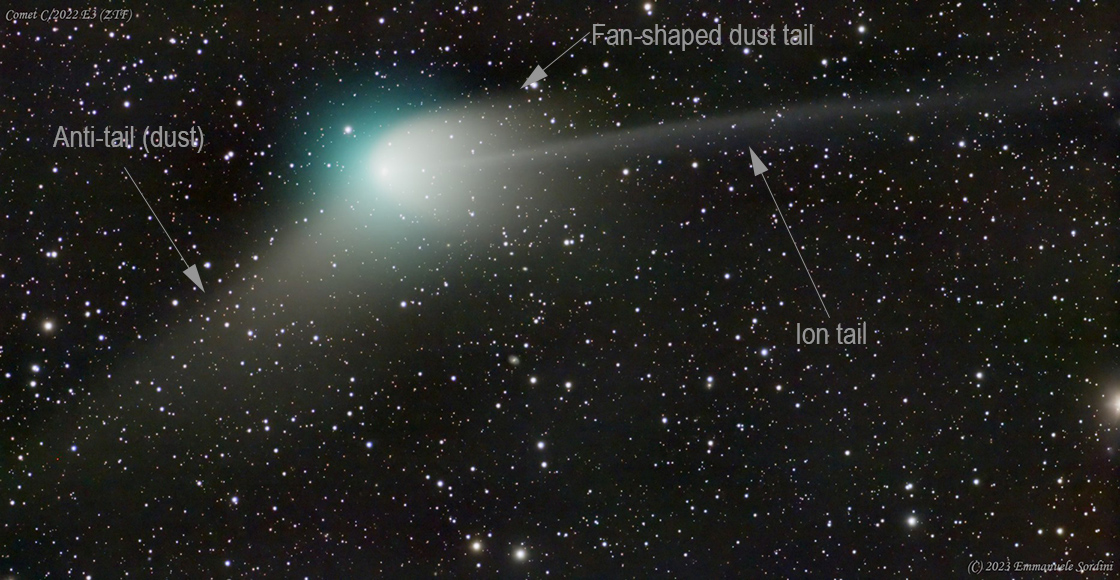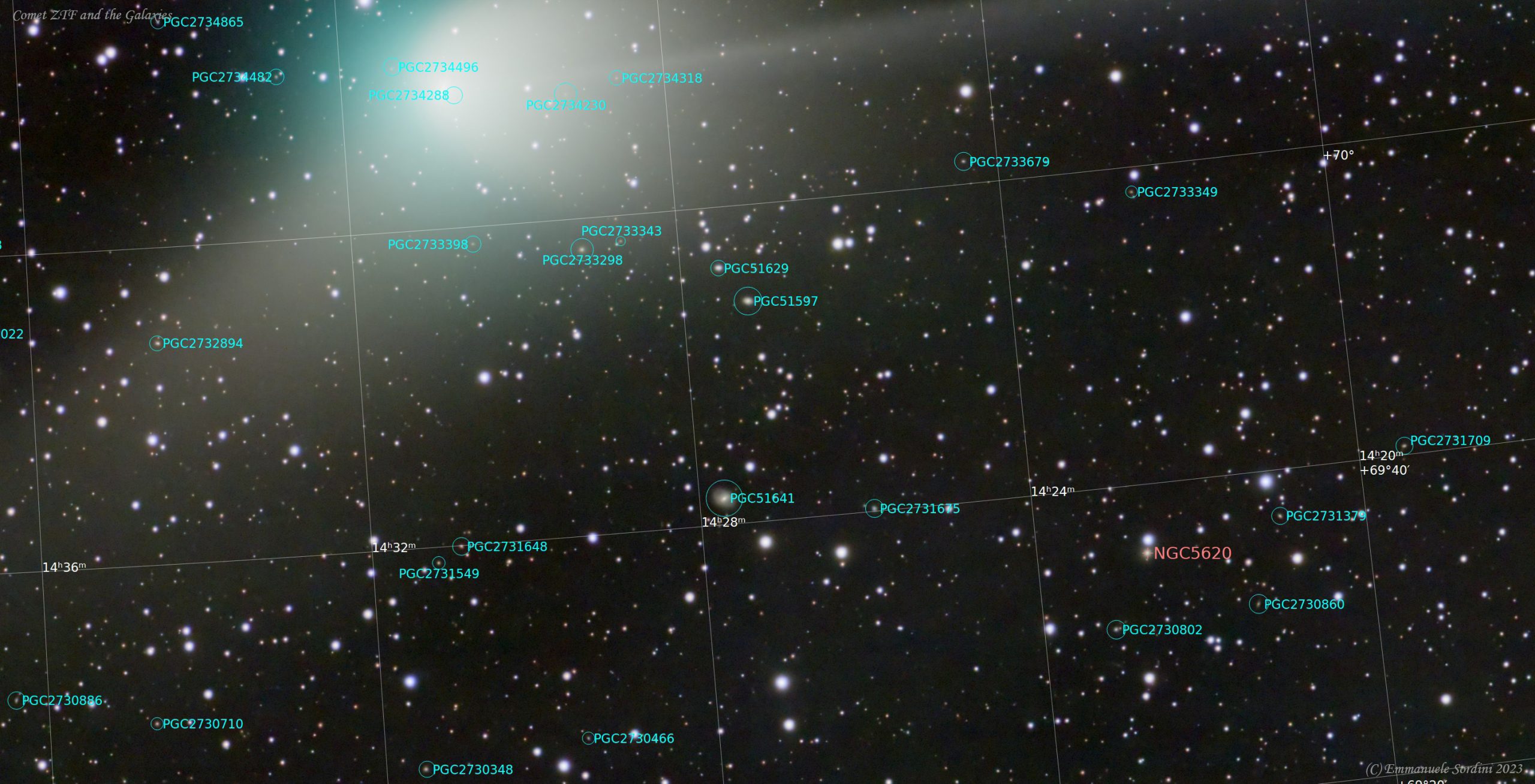It’s been a good while since I last updated my website with new content. The opportunity came with the comet dubbed “Neanderthal” by the mainstream media. Of course our ancestors have got nothing to do with this: maybe they spotted it, maybe not. Although the idea “tickles” everybody’s imagination, it can’t be verified. The comet’s inbound orbital period, estimated at about 50000 years, puts its previous passage at the time of our ancestors, but truth is, going so far back in time is so prone to errors that nobody can know whether or not somebody actually sighted the comet before us. And what's more, is that due to gravitational perturbations from solar system bodies, the comet is traveling a little faster than the escape velocity, so that its outbound orbital period is much longer than 50000 years: most likely, it will never come back again.
Therefore, from now on in this article, I shall call this comet its proper name: C/2022 E3 (ZTF). Discovered exactly one year ago by the Zwicky Transient Facility automated system (ZTF, hence the comet’s name), the ephemerides put its perihelion on 12th January 2023 at 1.1 AU (i.e. outside Earth’s orbit) and the closest approach to Earth on 31st January 2023. So, the period offering the best visibility conditions would span from early January to mid-February, with the comet barely attaining naked eye visibility. The comet’s path would reach very high declinations close to Polaris, so the conditions would be ideal for observers in the northern hemisphere, where the comet would remain high up in the sky for the whole night.
It’s always very difficult to predict comets’ behavior and brightness. But all in all we can say that comet ZTF lived up to its expectations, going just below magnitude 6, and revealing some details, mainly in photos taken through telephoto lenses and small telescopes. The months of January and especially February offered a lot of clear nights, which of course I didn’t miss out on.
So, here’s my observation log:
Contrary to what had been written on some Internet sites, naked-eye observation of the comet was no easy feat. One had to know exactly where to look and be under a clear dark sky. I managed to spot the comet with my naked eye as a barely visible, fuzzy star-like object (especially with averted vision) only on 27th and 31st January.
Not to be missed was the event of 11th-13th February, when the comet, zipping through constellation Taurus, would make a close encounter with Mars, and subsequently form a beautiful triangle high up in the winter sky together with Mars, Aldebaran and the Iades.
Without further ado, here's a collection of pictures, acquired mainly with OSC color cameras (Canon 6D or ZWO ASI 071 MC Pro) through short focal length lenses ranging from 135 to 200 mm, or my Pentax 75 refractor with its 500 mm focal length. Detailed acquisition data for each image is available in the captions by clicking the “I” button. All images were processed in PixInsight. Both the shorter, fan-shaped dust tail and the straight, narrower ion tail can be easily seen.
The comet even sports an anti-tail in some shots:

It was great fun and very interesting to follow and image the comet along its path in the sky, even if at the cost of sleepless and freezing nights in the deep of the winter (down to -13 C). Unfortunately, many pictures taken with telephoto lenses, the 200 mm in particular, were plagued by ugly reflections around brightest stars, even more so around Mars, which I didn’t manage to get rid of in post-processing..
Lastly, it’s worth zooming in a bit on the image of 27th January, where several galaxies (NGC 5671 aka PGC 51641, NGC 5620 and many others) can be seen:

The faintest PGC objects in the above image shine around magnitude 17 in the B band.
All in all I’m happy with this “comet binge”. And I sincerely hope the future will treat us to even brighter ones!

Leave a comment